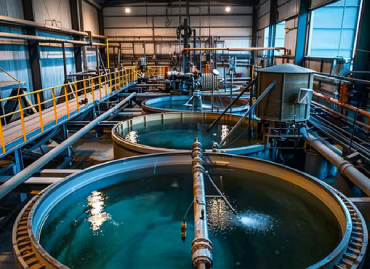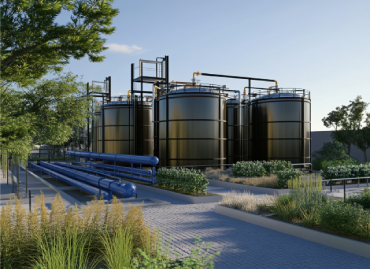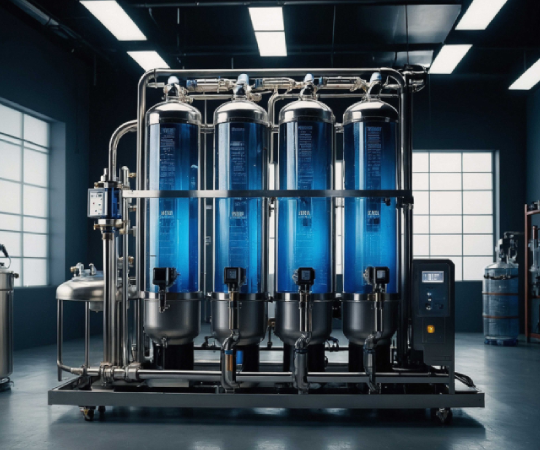- By Admin
- 10 Aug 2025
- ETP Plant
Innovative Water and Wastewater Treatment for India's Growing Tannery Industry
India has long been recognized as a powerhouse in the global leather industry, with tanneries forming the backbone of this thriving sector. Cities such as Kanpur in Uttar Pradesh, Kolkata in West Bengal, and Chennai in Tamil Nadu, alongside Maharashtra's hubs in Mumbai, Kolhapur, and Solapur, host a wide concentration of these units.
While they contribute immensely to the nation's GDP, exports, and employment generation, they are also under mounting scrutiny due to their heavy dependence on water and the environmental risks posed by wastewater discharges. Addressing these concerns requires a balanced approach that maintains production efficiency while safeguarding ecosystems.
"Water is not only the essence of life but also the lifeblood of industries like tanning. Without proper care, its misuse becomes destructive. When industries recycle, treat, and reuse every drop, they not only protect nature but also preserve their own sustainability and reputation in the global marketplace."
The Essential Role of Water in Tanneries
Water is indispensable at every stage of the leather-making process. From cleaning raw hides and soaking them for softening, to liming, deliming, tanning, dyeing, and finishing, it serves as the medium that drives chemical reactions and ensures product quality. Each process requires water of a specific quality to avoid defects or compromised results. Beyond core tanning operations, ancillary systems such as boilers, cooling mechanisms, and cleaning also rely on substantial water inputs. Given these demands, ensuring both the availability of fresh water and efficient recycling of treated water is no longer optional but an operational necessity.


Wastewater Challenges and Pollution Load
The leather tanning process, though vital to economic growth, generates wastewater that is among the most complex and hazardous of all industrial effluents. Initial stages like soaking produce organic-rich waste, while liming and unhairing release sulfides, lime, and suspended solids. The bating stage introduces enzymes and ammonium salts.
However, it is the chrome tanning process that creates the greatest environmental challenge, with effluents laden with chromium compounds that are toxic and persistent. Post-tanning steps such as dyeing and finishing further complicate matters by introducing oils, fats, synthetic dyes, and surfactants. Together, these discharges result in wastewater with very high Biological Oxygen Demand (BOD) and Chemical Oxygen Demand (COD), making it resistant to natural degradation and highly polluting if released untreated.
Conventional Treatment Methods in Tanneries
Recognizing the environmental risks, tanneries have invested in Effluent Treatment Plants (ETPs) designed to manage complex effluents. Primary treatment typically focuses on pH adjustment, neutralization, and coagulation to remove suspended solids and precipitate heavy metals like chromium. Many units adopt chrome recovery systems, which not only reduce toxic discharge but also allow the recycling of valuable chromium salts back into the tanning process, lowering costs.
Secondary treatment employs biological methods, either aerobic or anaerobic, to reduce organic loads. Tertiary processes such as sand filtration, activated carbon adsorption, and advanced oxidation ensure further polishing of effluents. Sludge generated during these stages requires careful handling and disposal to prevent secondary pollution. These structured, multi-stage processes form the backbone of regulatory compliance in the tanning industry.
Transition Toward Advanced Technologies
With stricter environmental norms and rising water scarcity, many modern tanneries are shifting toward advanced treatment systems. Reverse Osmosis (RO) has emerged as a reliable method to recover high-quality water from treated effluents, significantly cutting down on freshwater requirements. Membrane Bioreactor (MBR) systems, which integrate biological processes with membrane filtration, offer excellent efficiency in handling high-strength wastewater while producing effluent suitable for reuse.
Zero Liquid Discharge (ZLD) systems represent the pinnacle of sustainable water management in the tannery sector. By ensuring that every drop of wastewater is recovered and reused, ZLD eliminates discharge into the environment. Although requiring higher investment, these systems promote long-term savings by reducing dependence on external water sources and ensuring compliance with evolving global standards.
Tailored Solutions for Tannery Wastewater Management
We specialize in delivering end-to-end, turnkey solutions tailored to the unique challenges of the tannery sector. Our expertise spans across the design, installation, and maintenance of STPs, ETPs, WTPs, WWTPs, RO, and ZLD systems. By conducting thorough site assessments and water quality analyses, we develop customized solutions that align with regulatory guidelines and operational needs.
Our services extend beyond installation to include chrome recovery units, automation, and SCADA-based monitoring, ensuring real-time data-driven efficiency. Whether for small-scale tanneries or large industrial complexes, our solutions are scalable, automated, and cost-effective. With a focus on sustainability, we empower leather manufacturers to minimize ecological impact while enhancing their competitiveness in global markets.
Summary And Conclusion
The leather tanning industry continues to serve as a vital pillar of India's economy, but its survival depends on adopting sustainable water practices. With processes that consume vast volumes of water and discharge hazardous effluents, the need for efficient and innovative treatment systems is undeniable. From conventional ETPs and chrome recovery systems to advanced RO, MBR, and ZLD technologies, tailored solutions are helping tanneries comply with regulations and protect the environment. By investing in modern wastewater management systems, the industry ensures its long-term viability, reduces freshwater dependence, and secures its reputation as a responsible global player.































































